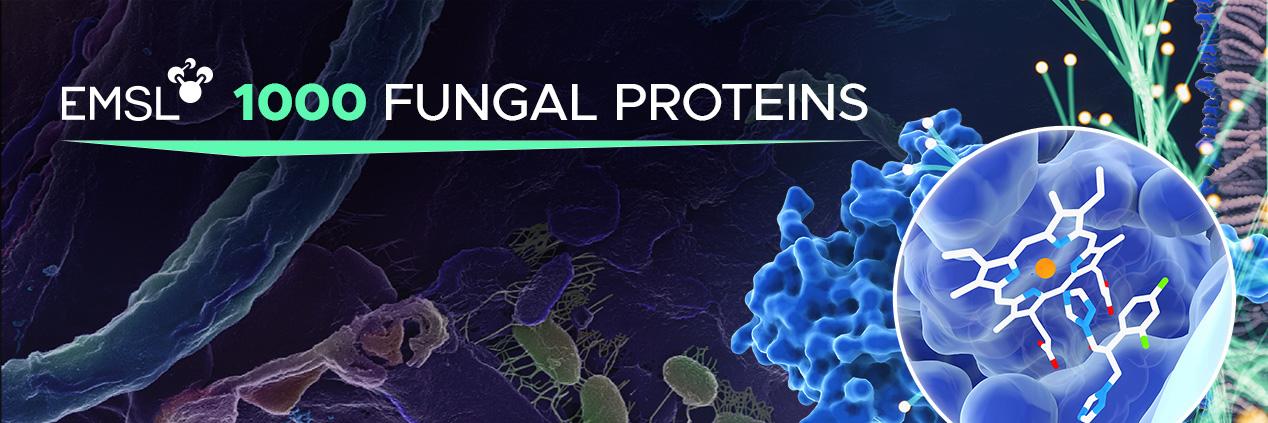1000 Fungal Proteins

Fungi represent the largest, most diverse group of microorganisms on Earth. With an estimated 1.5 million species, fungi live everywhere from soil to air and in plants, animals, and the human body.
In recent years, the catalog of fungal genome sequences in public databases has grown rapidly. However, functional and structural characterization of the proteins encoded in these sequences has not kept the same pace.
The Environmental Molecular Sciences Laboratory (EMSL) has developed the 1000 Fungal Proteins project to address this gap in available information about protein characterization.
What is 1000 Fungal Proteins?
The 1000 Fungal Proteins project is designed to associate structure and function with poorly characterized or previously uncharacterized proteins that are highly conserved across the fungal kingdom. EMSL will apply experimental and computational resources in structural biology to accelerate the annotation of proteins of unknown function.
Through this project, a team of researchers will explore biochemical, genetic, and cell biology approaches to characterize proteins, based on samples provided by EMSL users.
Samples of interest to 1000 Fungal Proteins include:
- target genes or protein sequences
- target genes that are cell-free vectored
- target proteins that have been purified
- fungal cells with high-copy of target protein in-vivo
EMSL has established the 1000 Fungal Proteins Pipeline that will be used to characterize and annotate conserved fungal proteins. The pipeline consists of functional screening, structural annotation, and post-translational modification profiling.

The 1000 Fungal Proteins team will add structural information that may enable more detailed active site chemistry information for enzymes as well as help visualize protein–protein interactions in multi-protein complexes.
By combining a wide spectrum of EMSL capabilities, 1000 Fungal Proteins will provide the scientific community with new characterization information, ranging from the structure of small molecule metabolites to the structure, function, and annotation of individual proteins.
1000 Fungal Proteins-related projects will have access to and use of the following EMSL instrumentation and resources:
- Cell-free expression pipeline
- Native Mass Spectrometry
- Nuclear Magnetic Resonance
- Krios Cryo-Transmission Electron Microscope
- Aquilos 2 Cryo-Focused Ion Beam/Scanning Electron Microscope
- Tahoma mid-range scientific computing
How to Get Involved
The scientific community will be encouraged to submit samples at various entry points into a pipeline for the project, ranging from users with highly purified proteins or metabolites to those who have a gene sequence and would apply computational or experimental workflows to their research.
Subscribe to the EMSL mailing list to be notified about upcoming proposal calls or bookmark the EMSL proposal call webpage.


